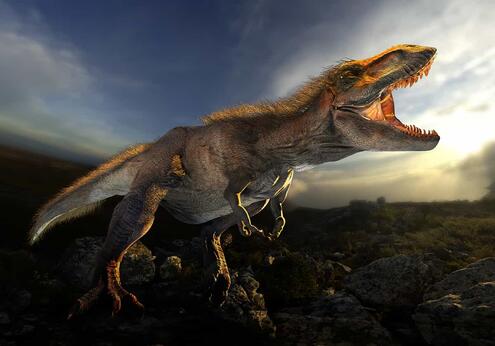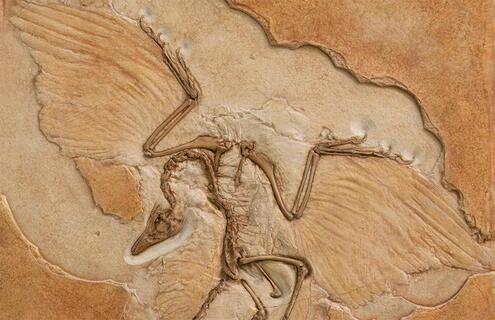LIFE SCIENCE
Dinosaurs: Evolution, Extinction, and Paleobiology
Evolution and Classification

R. Peterson/© AMNH
How do we study extinct animals?
Dinosaurs are unique in the history of life, from the earliest small dinosaurs to T. rex to modern birds. Authored by world-class experts at the frontier of paleontology, this six-week online course introduces you to the world's largest collection of vertebrate fossils, looks at how fossils are collected and prepared, and describes how new research methods and new technologies allow scientists to collect data and make inferences about dinosaur growth, behavior, and physiology.
This course begins May 27.
Summer 1 Session
COURSE COST
GRAD CREDIT
Dinosaurs are unique in the history of life, from the earliest small dinosaurs to T. rex to modern birds. Authored by world-class experts at the frontier of paleontology, this six-week online course introduces you to the world's largest collection of vertebrate fossils, looks at how fossils are collected and prepared, and describes how new research methods and new technologies allow scientists to collect data and make inferences about dinosaur growth, behavior, and physiology.
Course Format
This online course is asynchronous, giving you the flexibility to complete weekly activities at your own pace. Essays, written by our authoring scientists, are supplemented by case studies, textbook readings, videos, interactive simulations, image galleries, and more. These resources provide the foundation for assignments as well as online discussions where you will exchange questions and ideas with course faculty and other learners. The course culminates in a final project, which is your opportunity to create activities that you can use with your students.

© AMNH/C.Chesek
Connecting to Your Classroom
This course includes a variety of resources that can be adapted for use in your classroom. Participants frequently use course activities as a central component of their final project. For example, in this course you will use an interactive illustration to compare skeletal features of a prehistoric theropod dinosaur to a modern bird.
Recent Course Faculty
This course is co-taught by an experienced classroom teacher and a working scientist. With low faculty to student ratios, this powerful combination of scientific expertise and classroom application creates opportunities for discussions about the course content and how it can be taught.
This course begins May 27.
Summer 1 Session
COURSE COST
GRAD CREDIT
I absolutely loved the content that supported the inquiry, are birds dinosaurs. The textbook, essays, videos, and websites were great! The textbook was probably the best I have ever read. Learning how cladograms are used to show evolutionary relationships was very interesting. The theories about reasons for dinosaur extinction were fascinating. I also really enjoyed Rachel Beck's prompt, enthusiastic responses and feedback to our discussion items. I just loved this course!
The assignments were terrific. They can be used in my own classroom, and were fun to do. The essays were also wonderful. It was great to learn about this information from people who are actually DOING the research.
I thoroughly enjoyed the course assignments. They were truly relevant and were the most interesting and enjoyable graduate-level assignments I've ever encountered. Well done!




